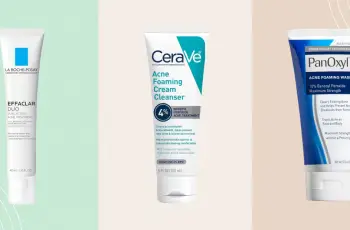
Can I Combine Granactive Retinoid with Lactic Acid?
When it comes to skincare, certain ingredients are crucial for maintaining healthy skin. Chemical exfoliants like lactic acid and retinol are undoubtedly two of the most effective actives, known for delivering visible results. With such a vast range of ingredients and formulas available, it can often feel overwhelming to figure out how to layer them correctly. Additionally, it’s important to know which products are compatible and which ones should be avoided altogether.
This post will explore this topic further, focusing primarily on the popular skincare powerhouses—lactic acid and granactive retinoid. Let’s start by examining the benefits each ingredient offers for the skin.
What is Granactive Retinoid?
Granactive retinoid, also referred to as hydroxypinacolone retinoate, is a form of vitamin A and one of the most extensively studied retinoid compounds. Compared to other retinoid derivatives, granactive retinoid is celebrated for offering a wealth of skin benefits with minimal side effects, such as redness, irritation, and peeling, which are often associated with traditional retinol.
Skincare Benefits of Granactive Retinoid
Granactive retinoid stimulates skin cell turnover, leading to a brighter and healthier complexion.
It helps to thicken the skin, enhancing its ability to protect itself from harmful sun exposure.
Granactive retinoid speeds up the skin’s natural exfoliation process, which reduces fine lines and wrinkles while preventing new ones from forming.
It penetrates deeply into the skin, clearing clogged pores of excess sebum, dirt, and bacteria, which can lead to blackheads and breakouts.
Granactive retinoid helps to even out skin tone, making the skin look more radiant while visibly improving signs of hyperpigmentation.
By boosting collagen and elastin production, it promotes firmer, plumper, and smoother skin.
For more in-depth information about other retinoid types, check out our detailed blog posts on Skin School.
What is Lactic Acid?
Lactic acid is widely regarded as one of the gentlest chemical exfoliants within the alpha hydroxy acid (AHA) family. Derived from fermented milk and other dairy products, it offers similar benefits to stronger acids, like glycolic acid, but with a much lower risk of skin irritation. Here are some key benefits of lactic acid for the skin:
Skincare Benefits of Lactic Acid
Lactic acid helps slough off the buildup of dead skin cells, which can contribute to breakouts, blemishes, and congestion.
It improves skin texture, making it firmer and thicker over time.
Lactic acid visibly reduces fine lines and wrinkles, leaving the skin looking smoother.
It acts as a humectant, drawing moisture into the skin and helping to lock it in, which supports a healthy lipid barrier.
Available in various concentrations, from 5% to over 12%, lactic acid allows for customizable results.
Due to its larger molecular size, lactic acid doesn’t penetrate too deeply, which helps avoid unwanted irritation.
Suitable for all skin types, lactic acid provides effective results without causing redness, dryness, or irritation.
For more details on lactic acid, be sure to read our dedicated blog post.
Can I Use Retinol and Lactic Acid Together?
Yes, you absolutely can—but there are some important tips to ensure you get the full benefits of both ingredients without experiencing adverse effects.
The most effective way to use both lactic acid and retinol is by applying them at different times of the day.
Use lactic acid in your morning routine to remove any residue or buildup of skincare products. It will also help prepare your skin for the next steps of your routine, allowing other formulas to absorb more efficiently.
Apply retinol in the evening, allowing it to work uninterrupted by external factors like pollution and UV rays while you sleep.
It’s crucial to use retinol in the evening because sunlight can deactivate retinoids, rendering them ineffective. Additionally, retinol can increase your skin’s sensitivity to the sun, so daily sunscreen with an SPF of 30 or higher is essential to protect your skin.
As your skin builds tolerance to both ingredients, you’ll notice significant improvements in your complexion and overall skin health. However, if your skin is sensitive to the application, consider using these products on alternate days. If you’re new to either ingredient, or if you have concerns, it’s always a good idea to consult a dermatologist or skincare professional to ensure you’re using the right products for your skin’s needs.
Can You Use AHA with Granactive Retinoid?
Yes, it’s possible to use AHA and granactive retinoid together, but you need to be mindful of how you apply them to maximize their benefits. While granactive retinoid is known for being gentle on the skin, it’s still not ideal to layer it directly with acids. This is mainly because the more acidic pH of AHA products can disrupt the skin’s natural acidic environment, potentially causing irritation, redness, dryness, or discomfort.
To avoid this, the most effective method is to apply AHA in the morning and granactive retinoid in the evening. Alternatively, you can use both in the evening, giving your skin enough time to rebalance before continuing with the rest of your skincare routine.
With patience and proper application, you’ll be able to enjoy impressive results. If you have any more questions about layering skincare ingredients or other skin-related concerns, follow us on Instagram for additional tips and advice.


